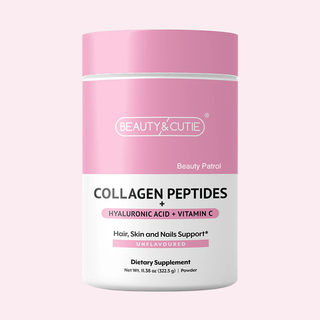Sunlight is essential for our overall health and well-being. It helps our bodies to produce vitamin D, which is important for strong bones and a healthy immune system. However, when we expose our skin to too much sunlight, it can have harmful effects. Overexposure to the sun's harmful ultraviolet (UV) rays can damage our skin and lead to a range of health problems. In this blog post, we'll explore the effects of sun exposure on the skin, and what you can do to protect yourself.
What Is Sun Exposure?
Sun exposure refers to the amount of time our skin is exposed to sunlight. The sun emits two types of harmful UV rays, UVA and UVB, both of which can cause damage to our skin. UVA rays can penetrate deep into the skin, causing premature aging, while UVB rays can cause sunburn and increase the risk of skin cancer.
What Are The Effects Of Sun Exposure On The Skin?
The effects of sun exposure on the skin can vary from person to person, depending on factors such as skin type, age, and the amount of time spent in the sun. Some of the most common effects of sun exposure include:
- Sunburn: This is one of the most common effects of sun exposure, and happens when our skin is exposed to too much UVB radiation. Sunburn can cause pain, redness, and peeling of the skin.
- Premature aging: UVA radiation can penetrate deep into the skin, damaging collagen and elastin fibers. This can lead to premature aging, characterized by wrinkles, fine lines, and age spots.
- Skin cancer: Prolonged exposure to UV radiation can increase the risk of skin cancer, including melanoma, the deadliest form of skin cancer.
- Hyperpigmentation: UV radiation can cause the skin to produce excess melanin, leading to brown spots or patches on the skin.
- Eye damage: Overexposure to the sun's UV rays can also cause damage to the eyes, including cataracts and macular degeneration.
- Discoloration: Discoloration is a common effect of sun exposure, characterized by noticeable changes in skin color or tone, such as dark spots, redness, or uneven pigmentation.
Types Of UV Rays
Ultraviolet rays (UV Rays) are the harmful radiation emitted by the sun that can damage our skin. There are two types of UV rays that affect our skin: UVA and UVB.
UVA Rays:
UVA rays are long-wave rays that can penetrate deep into the skin, causing damage to the collagen and elastin fibers. This damage can lead to premature aging, such as wrinkles, fine lines, age spots, and sagging skin. UVA rays can also weaken the immune system, making us more susceptible to skin cancers.
UVB Rays:
UVB rays are short-wave rays that are responsible for sunburn and skin damage. They can also increase the risk of skin cancer, especially if you have fair skin. UVB rays are strongest during the summer months, at high altitudes, and in areas with reflective surfaces, such as snow or water.
It's important to note that both UVA and UVB rays can cause damage to the skin, and it's essential to protect yourself from both.
What Are The Short-term Effects Of Sun Exposure On The Skin?
The short-term effects of sun exposure on the skin can be particularly noticeable and uncomfortable. The most common short-term effect is sunburn, which can cause redness, pain, and blistering of the skin. This happens when the skin is exposed to too much UVB radiation, which can damage the skin cells and cause inflammation.
Other short-term effects of sun exposure can include dryness, itchiness, and peeling of the skin. These symptoms are usually temporary and can be alleviated with the use of moisturizers and aloe vera.
It's important to note that even if you don't experience immediate symptoms of sun damage, your skin can still be affected. UVA rays, for example, can cause damage to the deeper layers of the skin, leading to premature aging and an increased risk of skin cancer over time.
To protect your skin from the short-term and long-term effects of sun exposure, it's important to practice sun safety. This includes wearing protective clothing, using sunscreen with an SPF of at least 30, seeking shade during peak sun hours, and avoiding tanning beds.
By taking these steps, you can enjoy the sun safely and protect your skin from the harmful effects of UV radiation.
What Are The Long-Term Effects Of Sun Exposure On The Skin?
The long-term effects of sun exposure on the skin can be even more concerning than the short-term effects. Over time, exposure to UV radiation can cause a range of skin conditions, including premature aging, skin cancer, and sunspots.
Premature aging is one of the most common long-term effects of sun exposure. As we mentioned earlier, UVA rays can penetrate the deeper layers of the skin, causing damage to collagen and elastin fibers. This damage can cause the skin to lose its elasticity, resulting in wrinkles, fine lines, and sagging skin.
In addition to premature aging, sun exposure can also increase the risk of skin cancer. Skin cancer is the most common type of cancer in the United States, with over 5 million cases diagnosed each year. The two most common types of skin cancer are basal cell carcinoma and squamous cell carcinoma, both of which are caused by exposure to UV radiation.
Another long-term effect of sun exposure is the development of sunspots. Sunspots are dark, irregularly shaped patches that appear on the skin after prolonged exposure to the sun. They are more common in people with fair skin and tend to appear on areas of the body that receive the most sun exposure, such as the face, hands, and arms.
In addition to these effects, sun exposure can also weaken the immune system and increase the risk of eye damage, such as cataracts and macular degeneration.
What Can Be Done To Protect The Skin From Sun Damage?
Sun exposure can be harmful to your skin and overall health. To protect your skin from sun damage, here are some tips you can follow:
- Use sunscreen: Apply sunscreen with an SPF of at least 30 every day, even on cloudy days. Reapply every two hours if you're outside for an extended period or if you're swimming or sweating.
- Wear protective clothing: Cover yourself with long-sleeved shirts, pants, and wide-brimmed hats to shield your skin from the sun's harmful rays.
- Seek shade: If possible, stay in the shade during peak sun hours, usually between 10 am and 4 pm.
- Use sunglasses: Wear sunglasses that block ultraviolet (UV) rays to protect your eyes and the delicate skin around them.
- Don't use tanning beds: Avoid tanning beds as they are a major source of UV radiation.
- Stay hydrated: Drink plenty of water to keep your skin hydrated, which can help it better withstand sun exposure.
By taking these measures, you can protect your skin from sun damage and reduce your risk of skin cancer and premature aging. Remember to always consult with a dermatologist if you notice any unusual changes or concerns with your skin.
What Are The Benefits Of Moderate Sun Exposure?
Moderate sun exposure can have several benefits for our skin and overall health. Here are some of the benefits of moderate sun exposure:
- Vitamin D production: Sun exposure is the primary source of vitamin D, which is essential for bone health, immunity, and mental health. Vitamin D helps our body absorb calcium and phosphorus, which are essential for strong bones. It also helps our immune system fight infections and reduces the risk of depression.
- Boosts mood: Sun exposure can also improve our mood by increasing the production of serotonin, a neurotransmitter that plays a key role in regulating mood and reducing anxiety.
- Lowers blood pressure: Moderate sun exposure has been shown to lower blood pressure, which reduces the risk of heart disease and stroke.
- Improves skin condition: Sun exposure in moderation can help improve skin conditions such as psoriasis, eczema, and acne. Sunlight can also help reduce inflammation and promote wound healing.
However, it is important to remember that excessive sun exposure can be harmful to our health and skin. Prolonged exposure to the sun’s ultraviolet (UV) rays can damage the skin, and increase the risk of skin cancer, and premature aging. Therefore, it is essential to take precautions such as wearing sunscreen, seeking shade during peak hours, and wearing protective clothing when spending time outdoors. Moderation is key when it comes to sun exposure.
Conclusion
In conclusion, sun exposure has both benefits and risks to our skin and overall health. While moderate sun exposure can provide us with essential vitamin D and improve our mood and skin condition, excessive exposure can lead to sunburn, premature aging, and skin cancer. Therefore, it is important to take precautions and protect our skin when spending time outdoors. By following the tips mentioned above and consulting with a dermatologist if needed, we can ensure that our skin stays healthy and protected while still enjoying the benefits of the sun. Remember, moderation is key when it comes to sun exposure.
Final Thoughts
Beauty and Cutie’s collagen powders are your secret to vibrant beauty. With a formula rich in collagen peptides and amino acids, it promotes cell growth for glowing skin, stronger nails, and healthier hair. Experience the power of true nourishment from the inside out!
Sources
- https://www.mayoclinic.org/diseases-conditions/sunburn/symptoms-causes/syc-20355922
- https://www.healthline.com/health/hyperpigmentation
- https://www.mdanderson.org/publications/focused-on-health/what-s-the-difference-between-uva-and-uvb-rays-.h15-1592991.html
- https://mahoneydermatology.com/5-important-reasons-to-wear-sunscreen-daily/
- https://www.aad.org/public/diseases/skin-cancer/surprising-facts-about-indoor-tanning
*These statements have not been evaluated by the Food and Drug Administration. This product is not intended to diagnose, treat, cure or prevent any diseases.


